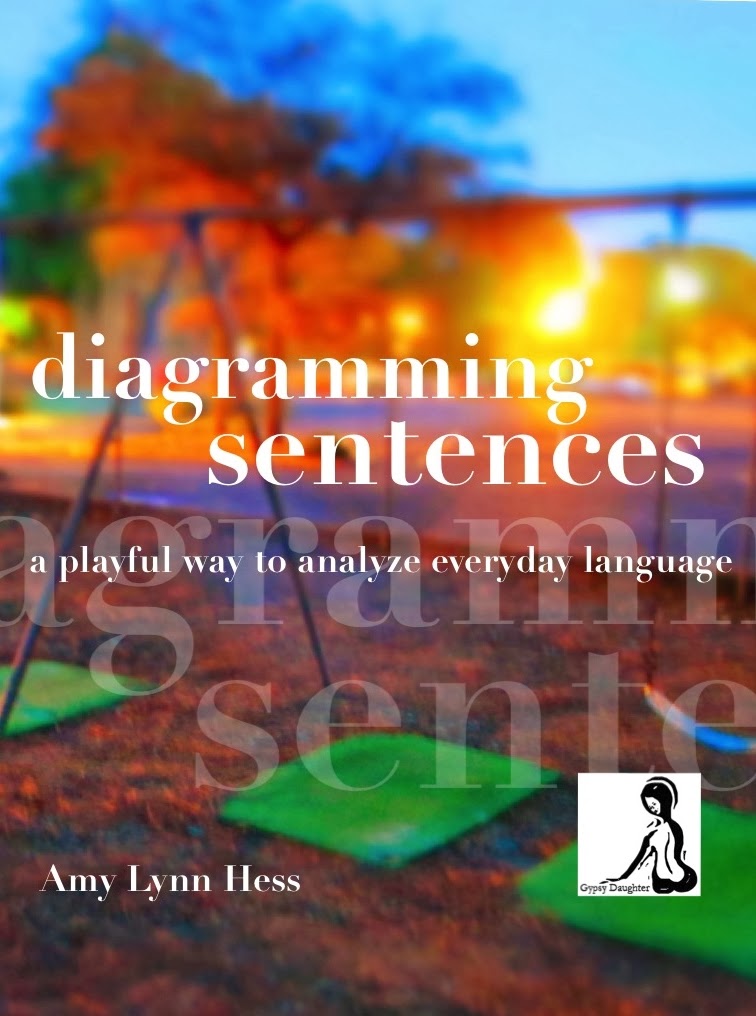 |
| In order to diagram a multi-clause sentence, we must be able to identify each clause. |
Specifically, before we can analyze or diagram multi-clause sentences, we must be able to identify each of the clauses.
What is a Clause?
A clause is a group of words that has a subject and a verb. There are two types of clauses, those that make a complete thought (independent clauses), and those that do not (dependent clauses).Independent Clauses Make a Complete Thought
An independent clause makes a complete thought, and with the proper punctuation it can stand alone as a sentence. Two or more independent clauses can be joined to create compound sentences. Take a look at the following examples. "S" stands for subject, and "V" stands for verb.
Independent clauses = [S + V + Complete Thought]
[Peter hunts the wolf].
[The ice cream is melting]. [Put it in the refrigerator]. (Understood "You")
[Jack climbed the beanstalk]; [he wishes he hadn’t].
[Cinderella cleaned the oven], and [she dug the well].
Dependent Clauses Do Not Make a Complete Thought
On the other hand, dependent clauses do not make a complete thought and cannot stand alone as sentences. Dependent clauses often begin with pronominal adjectives, relative pronouns, or subordinating conjunctions. As a matter of fact, another name for a dependent clause is subordinate clause. Those dependent, or subordinate, clauses will behave like nouns, adjectives, or adverbs within a sentence.
A noun clause is a dependent clause that behaves like a noun. A noun clause will begin with a subordinating conjunction or a relative pronoun.
An adverb clause is a dependent clause that behaves like an adverb, and modifies a verb, adjective, or another adverb. An adverb clause usually begins with a subordinating conjunction or a relative pronoun.
An adjective clause is a dependent clause that modifies a noun or pronoun. In an adjective clause, the relative pronoun or pronominal adjective might function within the clause as any other pronoun might: as a subject, object, or complement.
Here are more examples. Again, "S" stands for subject, and "V" stands for verb. Independent clauses are marked in green.
Dependent clauses = [S + V – Complete Thought] + Independent Clause
[While Sleeping Beauty napped], the prince searched for her.
[Because it is cold outside], Cruella wears her Dalmatian wrap.
[As Mother always says], it is better to be safe than sorry.
Hens should always be wary of the fox, [as Chanticleer knows].
What is a Phrase?
Do not confuse phrases for clauses. A phrase is a group of words that does not have a subject or a verb or both. A phrase usually acts like a single part of speech in a sentence, and a phrase could be part of a larger clause. The phrases below are marked in purple.
Examples of Phrases
Prepositional phrase: On the ferry, Sam proposed to Linda.
Infinitive phrase: To run near the lake is her favorite activity.
Gerund phrase: Running near the lake is her favorite activity.
Appositive phrase: Gerald, her favorite student, gave her flowers.
Participle phrase: The spot reserved for running is beautiful.
Compound and Complex Sentences
When we label sentences as simple, compound, complex, or compound-complex, what we're describing is each sentence's clause structure. In order to determine which type of sentence you're reading or writing, simply mark and label each clause. Once you mark and label the clauses, you'll be able to determine the sentence type by using the following definitions. Remember to mark the clauses, not the phrases.
A simple sentence is made up of one independent clause.
A compound sentence is made up of more than one independent clause.
A complex sentence is made up of one independent and at least one dependent clause.
A compound-complex sentence is made up of more than one independent clause and at least one dependent clause.
Want to learn more about diagramming sentences?
Take my complete online course, "Sentence Diagramming: From Beginner to Expert in 12 Lessons" on Udemy, or purchase my text, Diagramming Sentences: A Playful Way to Analyze Everyday Language (affiliate link) on Amazon.
Copyright Amy Lynn Hess. Please contact the author for permission to republish.

.JPG)


No comments:
Post a Comment